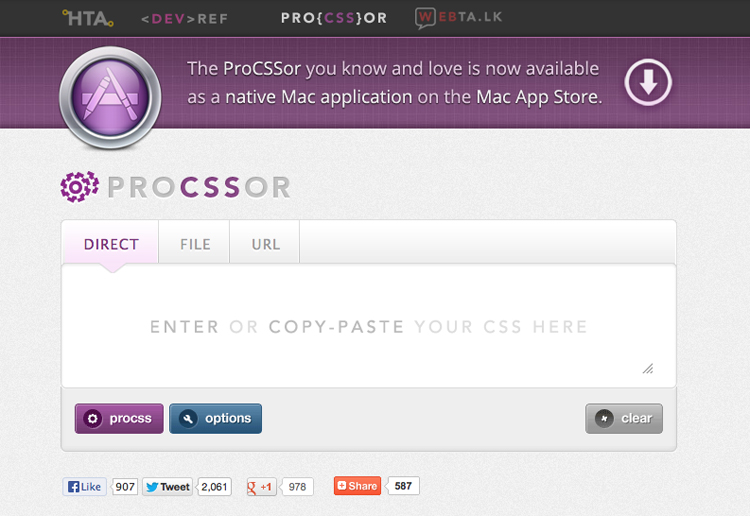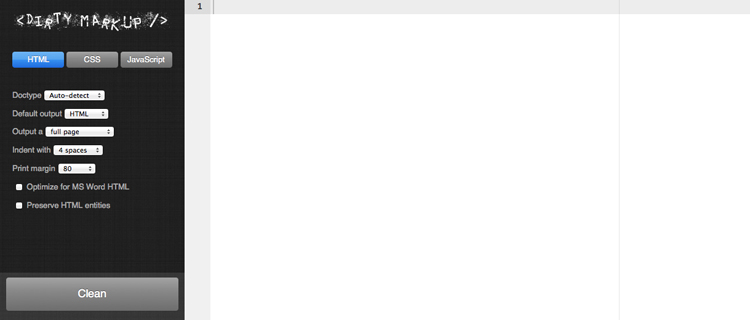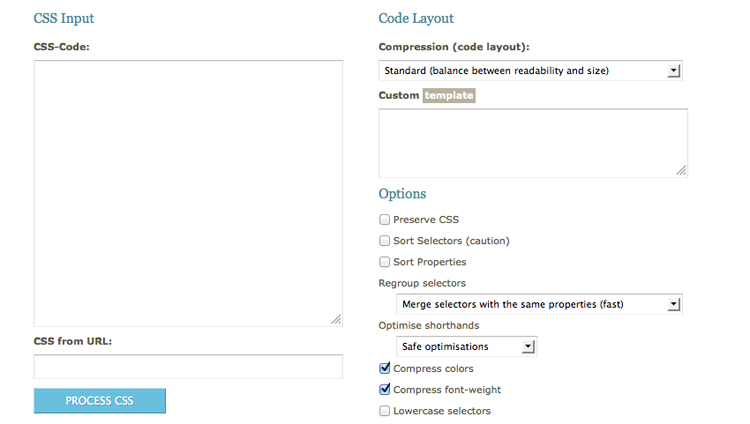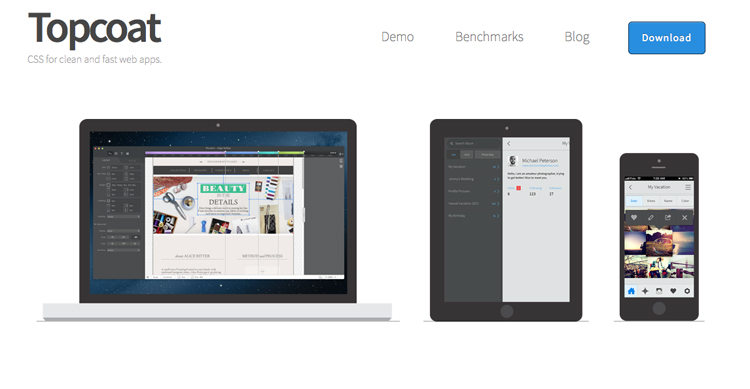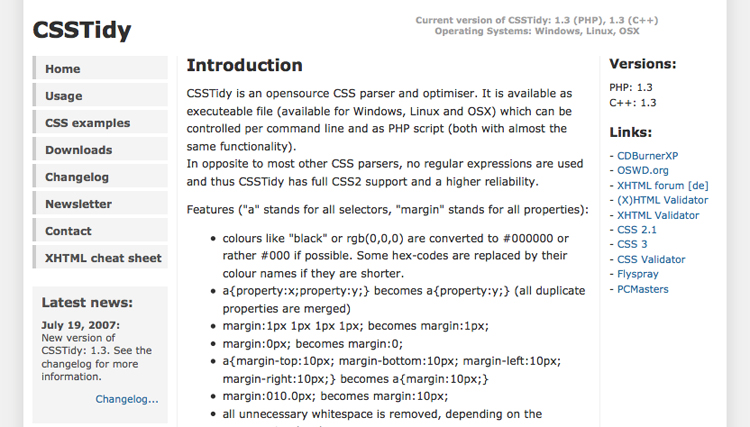But, cleaning up your CSS from countless design iterations and changes can be a tedious, time-consuming process. You likely don’t want to take on such tedium, and your clients likely don’t want to pay for a time-consuming tasks that offers such subtle benefits. From the designer’s perspective, manual CSS cleanup can be dreadful enough to crush creativity, take your focus off the higher-level thinking required by your work, and could potentially start making you like your profession less.
Luckily, there are some brilliant and helpful tools to help you automate some of the more mundane aspects of CSS and free your neurons up to tackle the more creative and enjoyable facets of web design. The following tools will leave you with an efficient, optimized, impeccably-organized CSS stylesheet that your web server, your current client, and your future prospects will greatly appreciate.
ProCSSor
ProCSSor is a streamlined, no-nonsense tool for making instant improvements to your CSS. Available via OS X, iOS, or any browser, the tool takes a CSS file, a pasted snippet, or a URL and immediately beautifies, formats, and future-proofs your CSS.
CSS Lint
CSS Lint offers a more instructive experience compared to other CSS cleanup tools. Most don’t tell you much about the rationale behind the CSS changes that they make, but CSS Lint gives you a concise explanation for each of its recommended changes. It has quite a few features that focus on errors, compatibility, performance, duplication, and accessibility, all of which can be enabled or disabled at will.
Dirty Markup
Dirty Markup has a unique approach to code optimization; it works as an aggregate and combines the power of several different code cleanup technologies (HTML Tidy, CSS Tidy, JS Beautify, Ace Editor) to give any provided code a comprehensive cleanup. As you might suspect, it works just as well on CSS as it does for JavaScript or standard HTML.
CleanCSS
CleanCSS accepts a URL or pasted code snippet and offers a wide variety of treatments. You can choose from between five different compressor settings that offer tradeoffs between readability and file size.
Code Beautifier
Code Beautifier is a simple CSS cleanup tool with no frills or frivolous features. It accepts pasted or linked CSS, and carefully cleans it up based on a practical array of options. If you’re looking to remain focused on the project at hand and not get lost in an overwhelming sea of features, this might be your ideal CSS cleanup tool.
Spritemapper
None of the other mentioned tools delve into the area of image optimization, which can be just as beneficial as the optimization of the code itself. Spritemapper accepts multiple images from within a CSS stylesheet, merges them into a single one, and generates proper CSS positioning for the corresponding “sprites” or image slices of each. The result is a faster site, fewer HTTP requests, and a more streamline stylesheet.
Topcoat
Topcoat isn’t a traditional CSS cleanup tool; it’s essentially a flexible framework for CSS development. If you start with compatible, well-written CSS, you’ll likely never have the need to clean up huge CSS messes. So, starting with Topcoat could be a more proactive, preventative approach to curating clean CSS.
CSSTidy
CSSTidy is similar to several other CSS cleaning tools, but it does offer some unique attributes. CSSTidy can be called via command line or PHP, and it’s available on Windows, Mac, or Linux platforms. If you have a development system built on any of these technologies or manage a large number of projects simultaneously, CSSTidy is the cleanup tool that can fit perfectly within your existing workflow and keep your CSS clean autonomously.
Styleneat
If you’re the meticulous type who still likes to tinker with your CSS or the cautious type who doesn’t want to put their trust completely in tools, Styleneat is likely the CSS cleanup tool for you. While it doesn’t offer minification or compression, Styleneat’s output is the most human-friendly, complete with reordered properties, sorted selectors, and indentations that make the stylesheet very clean from the human perspective.
W3C Validator
No collection of CSS tools is complete without mentioning the W3C Valdiator. While this doesn’t offer tools to streamline, compress, and optimize your code, it should certainly be considered where your CSS validity is concerned. While the other aforementioned tools have their merits, this one is backed by the W3C governing body.
What’s your CSS cleanup tool of choice? Do you have a favorite from the above, or perhaps one that wasn’t included?

